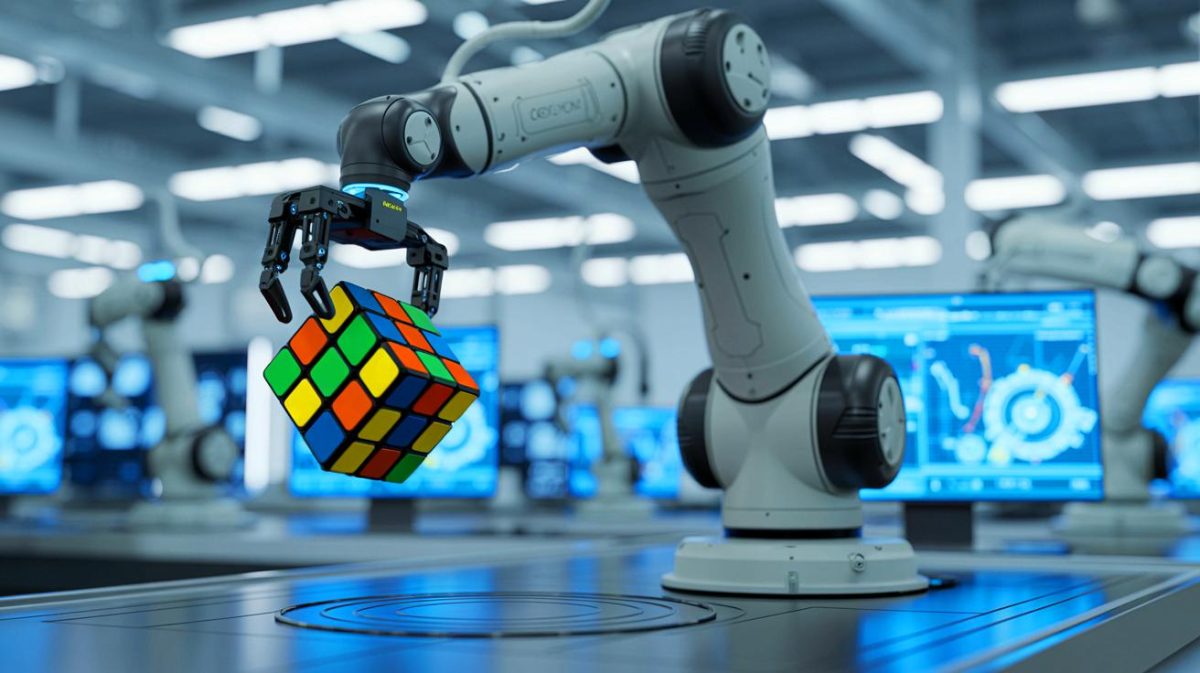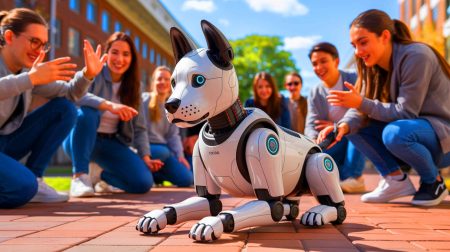| IN A NUTSHELL |
|
In the ever-evolving world of robotics and artificial intelligence, a group of ambitious students from Purdue University has made headlines. Their creation, a high-speed robotic system named Purdubik’s Cube, has achieved an unprecedented milestone by solving a Rubik’s Cube in a mere 0.103 seconds. This achievement not only sets a new Guinness World Record but also showcases the incredible potential of machine vision, custom algorithms, and precision hardware. As technology continues to push the boundaries of what is possible, this accomplishment raises intriguing questions about the future of robotics and automation.
Cube-Solving Champion Robot
Solving a Rubik’s Cube is a challenge that has bewildered many for decades. However, for a team of students from Purdue University’s Elmore Family School of Electrical and Computer Engineering (ECE), it became an opportunity to make history. Their invention, Purdubik’s Cube, is a high-speed robotic system that now holds the Guinness World Record for the “Fastest robot to solve a puzzle cube.” This remarkable achievement was accomplished in just 0.103 seconds, nearly tripling the previous official record of 0.305 seconds set by Japanese engineers in May 2024.
Matthew Patrohay, a team member from Purdue University, highlighted the robot’s extraordinary speed, stating, “We solve in 103 milliseconds. A human blink takes about 200 to 300 milliseconds. So, before you even realize it’s moving, we’ve solved it.” The team’s success is rooted in the strong foundation built through Purdue’s Cooperative Education Program, where students gain technical expertise and develop relationships essential for collaborative projects. Their dedication and ambition to surpass previous benchmarks were fueled by inspiration from past record-holders, ultimately proving their capability with record-setting precision.
Automation Meets Precision for Solving Rubik’s Cube Puzzle
Purdubik’s Cube made its debut at SPARK, the university’s Electrical and Computer Engineering student design competition, where it secured first place in December 2024. Following its initial success, the team continued to refine the robot, pushing the boundaries of automation and high-speed computing. The system utilizes machine vision for color detection, custom solving algorithms for rapid execution, and industrial-grade motion control hardware from Kollmorgen. Each movement is meticulously optimized to enhance acceleration, deceleration, and mechanical efficiency, allowing for sub-millisecond synchronization and control.
Shreyas Sundaram, Marie Gordon Professor of ECE at Purdue, emphasized the significance of this achievement, stating, “The Purdubik’s Cube team is a prime example of how Purdue is bringing algorithms, robotics, and control together to achieve great feats of engineering.” The system also features a Bluetooth-enabled “Smart Cube,” allowing users to scramble the puzzle in real time. This interactive element transforms the experience from a passive demonstration into an engaging, hands-on showcase of robotics and automation, demonstrating the potential for future advancements in synthetic systems.
Breaking Boundaries in Robotics and Speedcubing
The development of Purdubik’s Cube represents a groundbreaking intersection of robotics and speedcubing, highlighting the potential for innovation in these fields. The team’s achievement is not merely about setting a new record; it also underscores the ability to push the boundaries of what synthetic systems can accomplish. Nak-seung Patrick Hyun, an assistant professor of electrical and computer engineering at Purdue, remarked, “This achievement isn’t just about breaking a record; it pushes the boundaries of what synthetic systems can do. It brings us closer to understanding ultra-fast coordinated control systems like those found in nature.”
The innovative use of machine vision, custom algorithms, and precision hardware has set a new standard for what is possible in robotics. By achieving a feat that once seemed impossible, the Purdue team has not only redefined speedcubing but has also opened new avenues for research and development in robotics. Their success serves as a testament to the power of collaboration, ambition, and the relentless pursuit of excellence in engineering.
The Future of Robotics and Automation
The success of Purdubik’s Cube is a clear indicator of the rapid advancements being made in the fields of robotics and automation. As technology continues to evolve, the implications of such breakthroughs are vast, ranging from industrial automation to consumer electronics and beyond. The ability to solve complex problems with unprecedented speed and precision could revolutionize various sectors, leading to increased efficiency and new possibilities in engineering and design.
This achievement also raises questions about the future role of robotics in our daily lives. As machines become more capable of performing tasks previously thought to be the domain of humans, how will society adapt to these changes? What new opportunities and challenges will arise as we continue to integrate advanced technology into our world? As we stand at the forefront of a new era in robotics, the possibilities are both exciting and thought-provoking.
Did you like it? 4.5/5 (21)








Wow! That’s insane! How do they even measure something that fast? 🤯